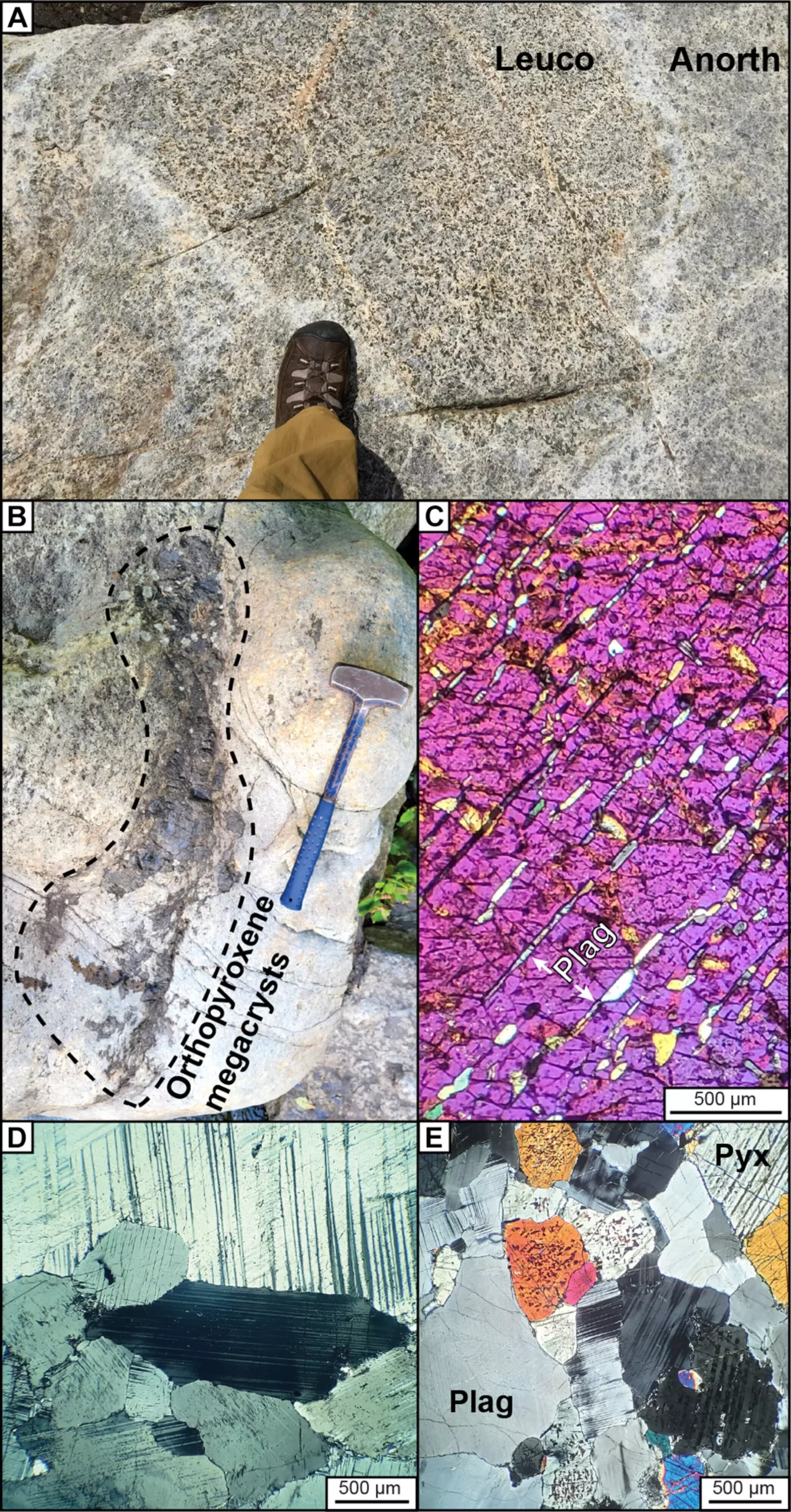The study of massif-type anorthosites, peculiar rocks that formed only during a specific period in Earth’s history, has long perplexed scientists. These plagioclase-rich igneous formations, covering vast areas and containing titanium ore deposits, have sparked conflicting theories about their origins. A recent study published in Science Advances sheds light on the complex relationship between Earth’s mantle, crust, and tectonic processes that have played a crucial role in shaping the planet’s geological history.
Led by researchers Duncan Keller and Cin-Ty Lee from Rice University, the study focused on Marcy and Morin anorthosites, both dating back 1.1 billion years in North America’s Grenville orogen. By analyzing isotopes of boron, oxygen, neodymium, and strontium in the rocks, along with petrogenetic modeling, the team uncovered crucial insights into the magmas responsible for forming these unique rock formations. The researchers found that the magmas were rich in melts derived from oceanic crust altered by seawater at lower temperatures, with isotopic signatures resembling those of other subduction zone rocks like abyssal serpentinite.
The findings suggest that massif-type anorthosites likely originated from extensive melting of subducted oceanic crust beneath convergent continental margins. This process, occurring during a time when Earth’s mantle was significantly hotter, demonstrates a direct correlation between the formation of these rocks and the planet’s thermal and tectonic evolution. The study’s innovative approach, combining traditional methodologies with boron isotopic analysis, provides valuable insights into the conditions under which these rocks formed, hinting at a period of very hot subduction that characterized Earth’s early history.
Massif-type anorthosites, which do not form under present-day geological conditions, offer a glimpse into Earth’s distant past. The study’s identification of very hot subduction as a key factor in the formation of these rock formations opens up new avenues for interdisciplinary research. By examining ancient rock formations like massif-type anorthosites, scientists can unravel the intricate tapestry of Earth’s tectonic and thermal history. The research not only enhances our understanding of these enigmatic rocks but also sheds light on broader implications for the geological evolution of our planet.
The recent study on massif-type anorthosites represents a significant step forward in deciphering the mysteries of these unique rock formations. By delving into the composition and origins of these rocks, researchers have unveiled important connections between Earth’s geological processes and the formation of massif-type anorthosites. The study’s findings offer valuable insights into ancient rock formations, providing a deeper understanding of Earth’s past and the forces that have shaped our planet over billions of years. As scientific exploration continues, new discoveries are sure to further illuminate the complex interplay between Earth’s mantle, crust, and tectonic forces.


Leave a Reply